Hi Dan,It is 5mm at the top.
Your framing continues to look terrific. Looking at Scantlings in Steel's Elements and Practice of Naval Architecture (folio VI) the tops of the top timbers were 4 inches (2.1mm to 2.8 mm at 1:48) in and out on 10 gun vessels, so with 5mm there is a lot of sanding. Would it be easier to size them closer to the final thickness before mounting them and then finish sanding them once all are in place?
Allan





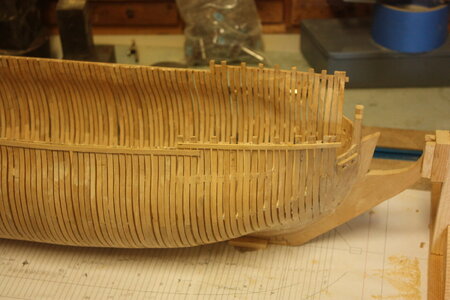

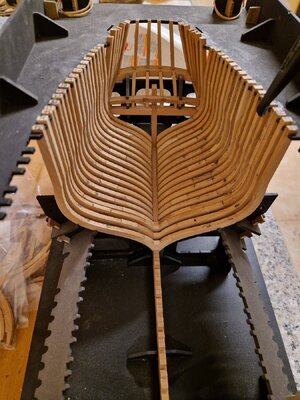
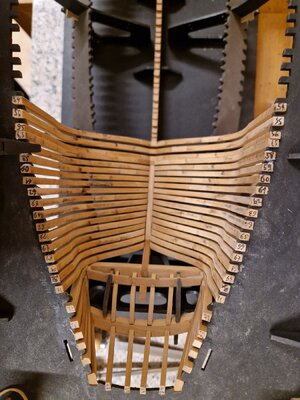
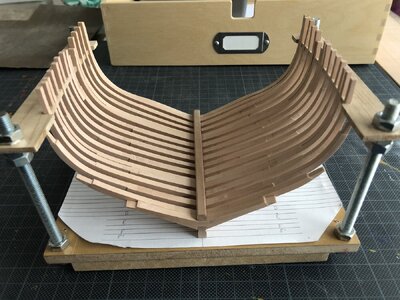
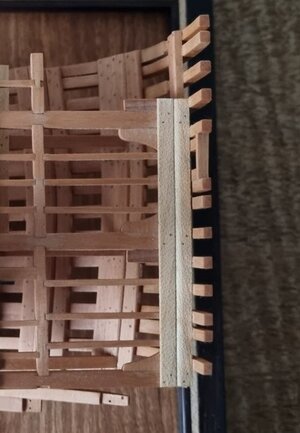
![20240616_224250[1].jpg 20240616_224250[1].jpg](https://shipsofscale.com/sosforums/data/attachments/438/438059-e8978e958c7c08a14d742e0c445914d7.jpg?hash=6JeOlYx8CK)